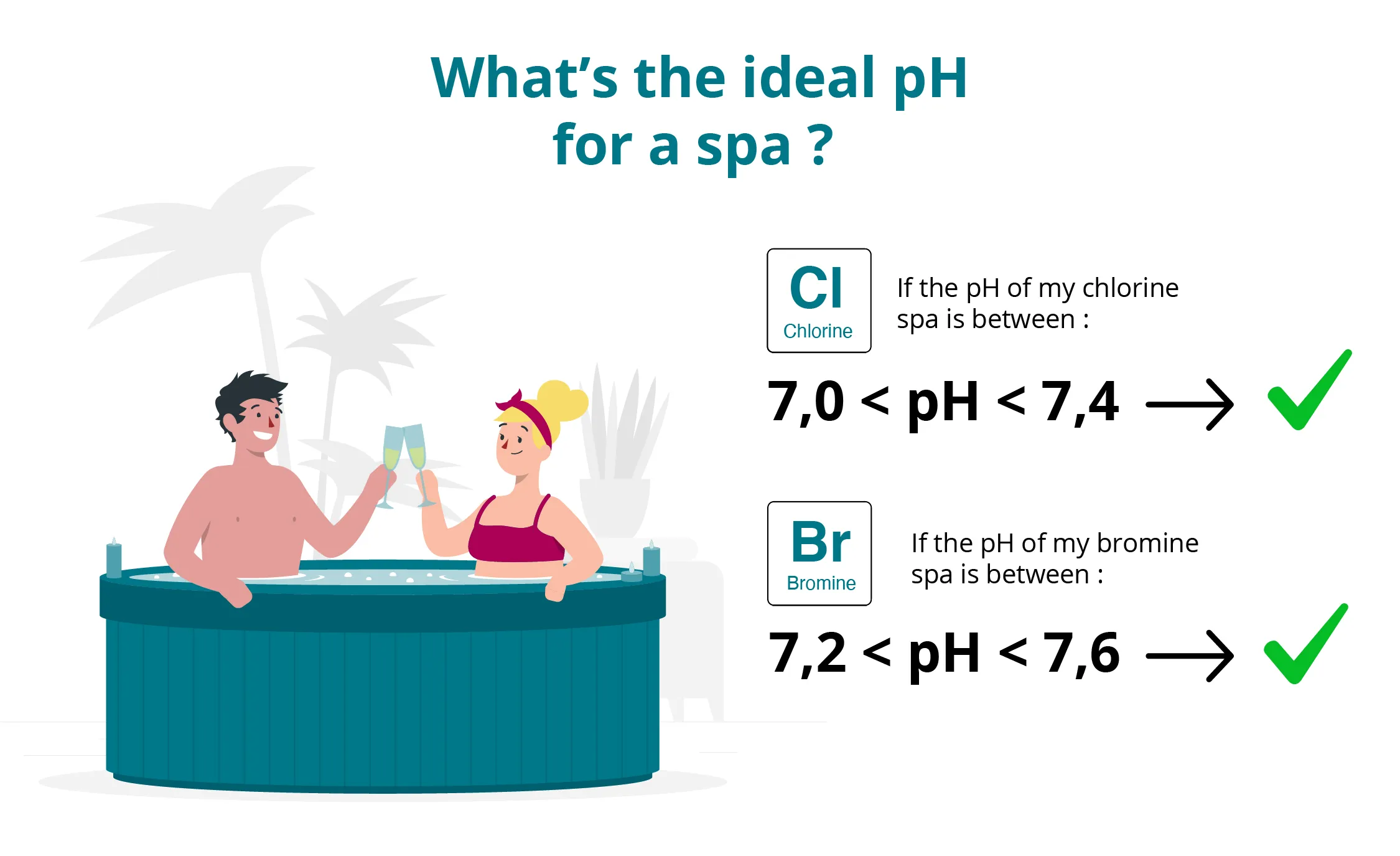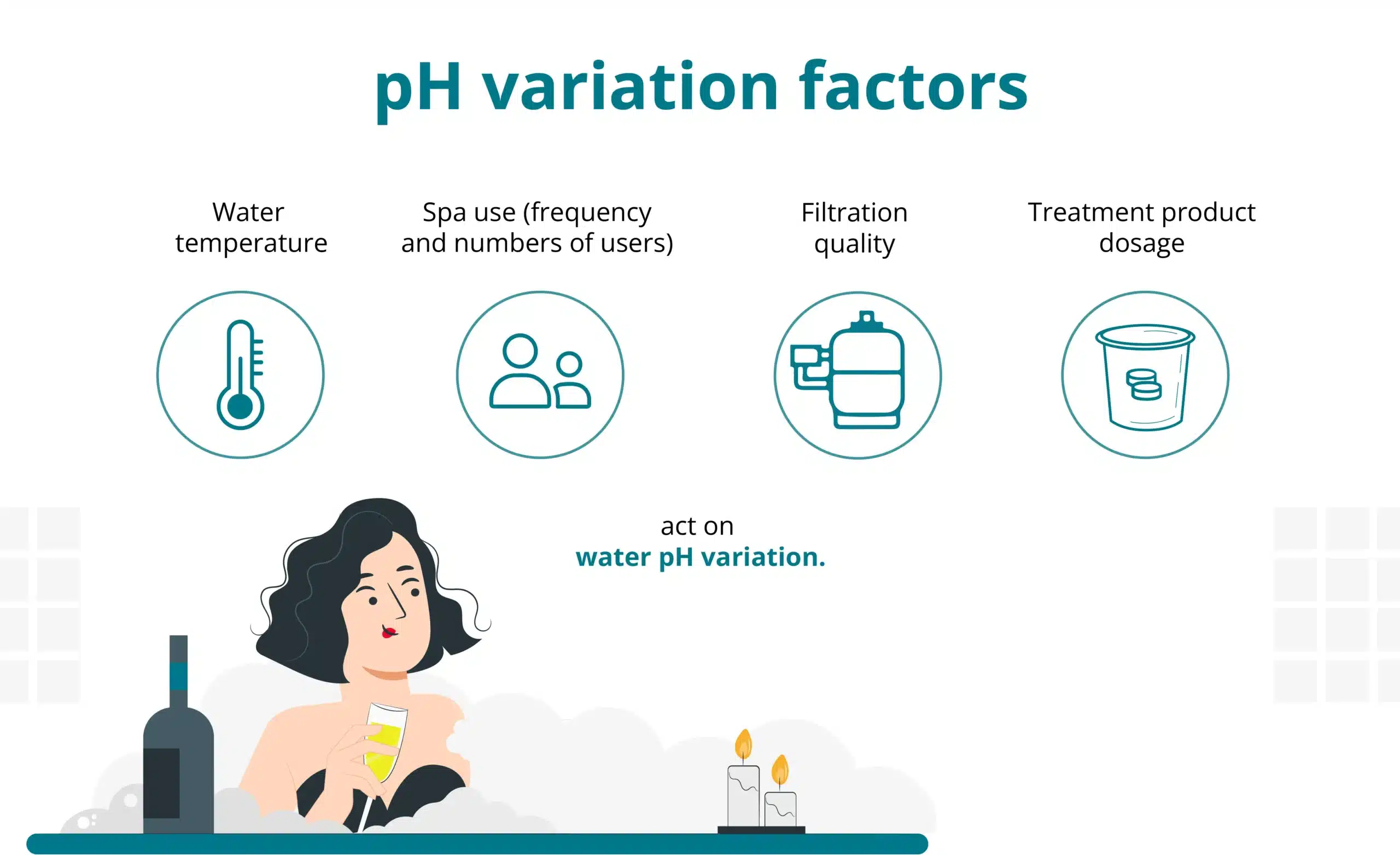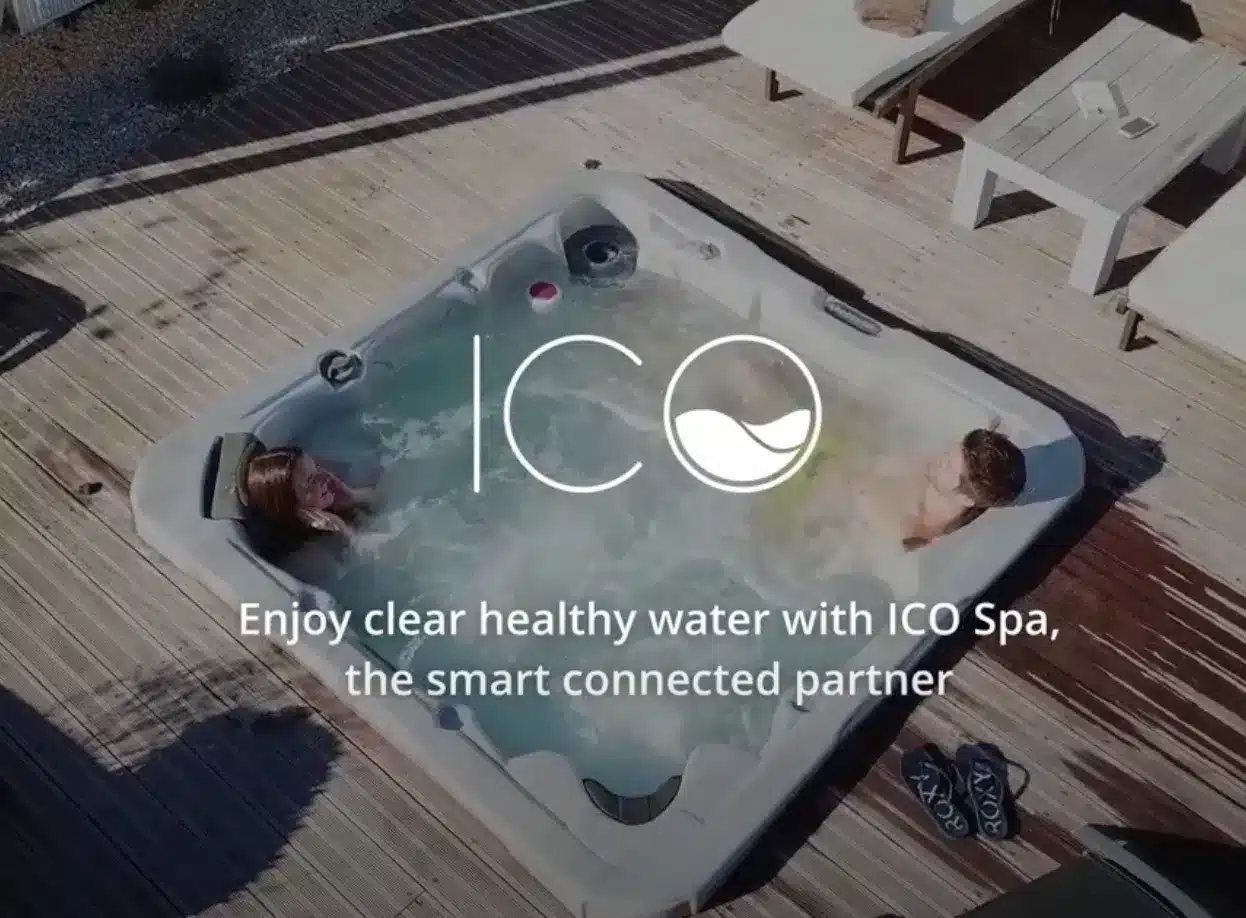Free delivery, French manufacturing, Satisfied customers
Free delivery, French manufacturing, Satisfied customers
Figuring out how to raise or lower the pH in your spa is important, as it's one of the key parameters in maintaining balanced water. pH varies according to a number of factors, so it's important to measure it regularly and correct any imbalance. Read all about it in this article.

pH (or Hydrogen Potential) is one of the most important parameters to measure regularly when owning a spa, as it plays a key role in balancing the water.
Measuring the pH allows you to control the quality of your spa water on a scale from 0 to 14.
A neutral pH enables the disinfectant treatment (chlorine, salt, bromine) to work optimally to eliminate pollutants present in the water. This helps maintain safe, healthy water for bathers, reducing the risk of infection or illness.

Balanced water is defined by three parameters: pH, alkalinity (TAC) and water hardness (TH). The aim is to obtain balanced water, i.e. water that is healthy and comfortable (or pleasant) for the skin. Water Balance gives a synthetic value of water quality. How to maintain water balanced in your spa.
Water pH should be measured at least during weekly spa maintenance, or daily depending on the number of bathers and frequency of spa use.
To find out more about these measurement systems, you can read this comparison of pH testers.
It's important to be aware of the factors that cause variations in the pH level of your spa water, so that you can prevent variations accordingly. For example, one of these factors is the number of bathers, so you'll need to activate filtration first. You'll need to measure the pH after a few hours to correct it, if necessary.

If the pH is higher than 7.4 (for a chlorine-treated spa) or 7.6 (for a bromine-treated spa), pour pH minus into your spa water and run a water filtration cycle. Repeat the pH measurement after 6 hours.
Rebalancing the pH of water can take time, so it's best to add products little by little to rectify it (following the manufacturer's recommendations).
If the pH is below 7.0: add pH plus product by dissolving it in a bucket of water (from the spa) to protect its coating, then pour the contents into your spa water. Then activate filtration for one complete cycle. Re-measure pH after 6 hours.
If the pH of the water does not change after the addition of pH - or +, this may mean that your water is over-buffered: it is the alkalinity level (TAC) that is too high and prevents the pH from regulating. The TAC should be between 100 and 150 mg/liter (depending on the treatment used in your spa).If you find yourself in this situation, you need to resolve the TAC problem to restore a balanced pH by activating a full filtration cycle. Sodium bisulfate can also be added. You should avoid swimming for 48 hours if you use this product.
An unbalanced pH compromises the effectiveness of disinfectants such as chlorine or bromine. It can also irritate bathers' skin and eyes, change the color of the water, and generate algae growth.
High pH can damage your spa's lining. This leads to cloudy water, limescale encrustations on the walls and, in extreme cases, the appearance of green algae (due to the loss of chlorine efficiency).
Too low a pH can lead to corrosion of your equipment, deterioration of pool walls, and irritation of bathers' eyes and skin.
To conclude this article, remember that water pH is one of the most sensitive elements in maintaining balanced, healthy, clear water. Controlling pH should be part of your spa maintenance routine. To save time and regularly analyze your spa's water quality, opt for a connected probe to simplify your spa maintenance. Click on the image to discover ICO SPA.

Ce site Web utilise des cookies pour améliorer votre expérience lorsque vous naviguez sur le site Web. Parmi ceux-ci, les cookies classés comme nécessaires sont stockés sur votre navigateur car ils sont essentiels au fonctionnement des fonctionnalités de base du site Web. Nous utilisons également des cookies tiers qui nous aident à analyser et à comprendre comment vous utilisez ce site Web. Ces cookies ne seront stockés dans votre navigateur qu'avec votre consentement. Vous avez également la possibilité de refuser ces cookies. Mais la désactivation de certains de ces cookies peut affecter votre expérience de navigation.
| Cookie | Duration | Description |
|---|---|---|
| cookielawinfo-checkbox-analytics | 11 months | This cookie is set by GDPR Cookie Consent plugin. The cookie is used to store the user consent for the cookies in the category "Analytics". |
| cookielawinfo-checkbox-functional | 11 months | The cookie is set by GDPR cookie consent to record the user consent for the cookies in the category "Functional". |
| cookielawinfo-checkbox-necessary | 11 months | This cookie is set by GDPR Cookie Consent plugin. The cookies is used to store the user consent for the cookies in the category "Necessary". |
| cookielawinfo-checkbox-others | 11 months | This cookie is set by GDPR Cookie Consent plugin. The cookie is used to store the user consent for the cookies in the category "Other. |
| cookielawinfo-checkbox-performance | 11 months | This cookie is set by GDPR Cookie Consent plugin. The cookie is used to store the user consent for the cookies in the category "Performance". |
| viewed_cookie_policy | 11 months | The cookie is set by the GDPR Cookie Consent plugin and is used to store whether or not user has consented to the use of cookies. It does not store any personal data. |